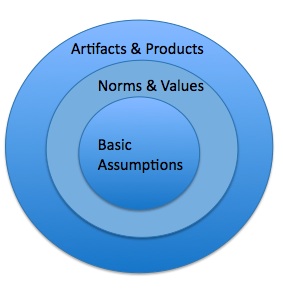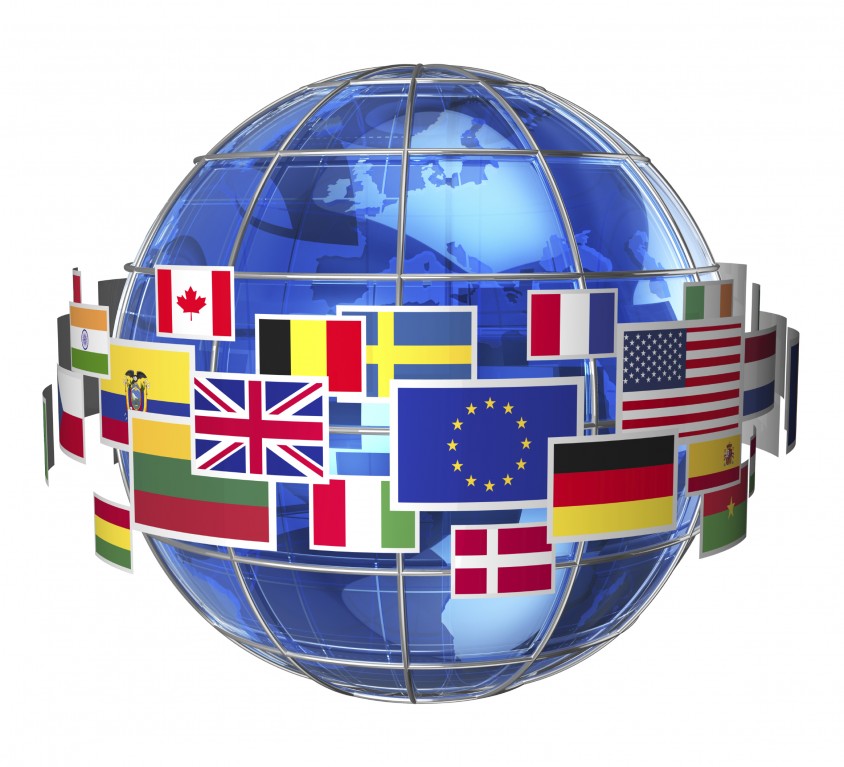Tag: intercultural management
Mindful leadership in a multicultural environment – Part III
This article looks into the difference between intercultural coaching versus coaching in an intercultural management environment and highlights the difference between measures on the job and measures off the job.
Intercultural coaching has: “(…) the same basic tenets as standard professional coaching but also takes into consideration the coachee’s cultural perspective, and those of the people around him/her. It focuses on creating an ‘intercultural climate’ that allows the coach and coachee to become more culturally aware and adapt their behaviour and expectations as appropriate.”[1] Intercultural coaching is in so far not that different from ‘usual’ coaching, the prerequisite being that the coach has ‘intercultural competences’. These competences are described in the literature as usually having three dimensions: affective, cognitive and communicative behavioural.[2] The first one, comprises for example self-confidence, flexibility, tolerance etc.; the second one refers to how individuals understand and manage cultural differences, specificities of cultural communication processes etc.; the third dimension describes the ability to display appropriate cultural behaviour and related social competences.
Intercultural coaching as such usually takes place on-the-job, tackling work environment specific topics and questions. Multicultural teams are supervised and accompanied in order to make them aware of specific behaviours related to their culture of origin as well as to identify synergies and to work on problem areas.
Compared to ‘on-the-job’ measures, there are several other human resource development methods related to intercultural topics, such as intercultural consulting or intercultural training, which are referred to as being ‘off-the-job’.[3] The first one is normally sought by companies who are not sure yet which concrete measures and tools would be the most appropriate to their particular situation. They then hire external consultants to analyse the circumstances and to come back with a solution. Intercultural trainings are normally for people who are about to be sent to a foreign work environment in order to prepare them cognitively to the new culture, habits and thought processes.
Coaching in an intercultural management environment finally, is a coaching that takes place in a multicultural setting, but where the main purpose and aim of the sessions does not have to be related to the improvement of intercultural competency per se. It also means that different nationalities have to be coached and accompanied in a different way, as we cannot assume that the same techniques or exercises will work with all types of coachees. As explained in part II of this article, there are various types of cultures[4] all necessitating a thoughtful and differentiated approach.
But why could the above be important for a mindful leader? Well, as I have explained in a previous post, mindfulness requires among others, the mental quality of ‘non-judging’[5]. If as a leader, and as many of us do, you have to interact, work and lead in a multicultural, global environment, possessing intercultural competence and being aware of the impact of your own culture on your behaviours, you will have much more success as you will be able to actually leverage synergies as well as to avoid problems/misunderstandings before they even arise.
If this article (parts I-III) has raised questions and you would like to talk about these, don’t hesitate to contact me! Looking forward to hearing from you…!
[1] Kate Griffin and Richard Cook: Intercultural Coaching the next big thing; Internet: http://www.sietar.org.uk/publications
[2] See for example: J. Bolten or Gertsen 1990
[3] Translated from J. Bolten: “Interkulturelles Coaching, Mediation, Training und Consulting als Aufgaben des Personalmanagements internationaler Unternehmen”, p.3.
[4] See the Lewis Model: http://www.crossculture.com/services/cross-culture/ for example
[5] See my article entitled: ‘Planting the seeds for Mindfulness’ on this blog.
Mindful leadership in a multicultural environment – Part II
Before looking into the different aspects of what it means to be a leader in a multicultural environment, what problems can arise and how to solve them, a commonly used term has to be defined. The word ‘culture’ is used in so many ways today but do we really know what lies behind it? In fact, many different definitions exist, depending on the context the word is used in. Geert Hofstede, a well-known Dutch researcher in the field of organisational studies, says the following: culture is “(…) the collective programming of the mind distinguishing the members of one group or category of people from another”. The ‘category’ can refer to nations, regions within or across nations, ethnicities, religions, occupations, organizations, or the genders.”[1]
For my purposes, a definition I find most useful is that of the ‘onion-model’ of culture from Trompenaars. It describes something complex as culture with a simple image, that of an onion, where the outer layer represents behaviours, language, food, clothing etc. of a person; looking more to the inside one can find norms and values. The inner core layer finally, is made of “basic assumptions”[2] like routine actions and beliefs that are deeply rooted inside.  ”Onion Model” of Culture[3]
”Onion Model” of Culture[3]
What this model really shows is that we cannot judge or pretend to understand a person simply from his or her behaviours, clothing and food. There is much more to culture than what we can actually see. Acknowledging this fact and being mindful when being part of or leading international teams, will actually help avoiding misunderstandings and bring clarity. “The first step for leaders is to help all players recognize that there are cultural differences – to recognize their importance and impact”.[4]
Let me give you an example: a simple question at the end of a workshop or meeting like “does everybody understand what the next steps are, i.e. is everything clear” can have a different impact on people with various cultural backgrounds. Whereas in some cultures people are used to ask questions, seek clarification and understanding, in some other cultures admitting that things are not clearly understood is actually considered as ‘losing ones face’; hence there won’t be any questions or signs that some information was missing which for the workshop or meeting leader will be very confusing as he/she will be expecting a certain output. In order to avoid this particular situation, it can be very helpful to have a look at cultural type models, like the “Lewis’ model” to give one example:[5] Although it appears difficult to categorize every single person, this model provides a helpful approach and can already solve many problems before they appear.
Although it appears difficult to categorize every single person, this model provides a helpful approach and can already solve many problems before they appear.
Specialised coaches can of course help navigate the uncertain waters of intercultural management. Part III of this article will look into the difference of intercultural coaching versus coaching in an intercultural management environment as well as highlight the difference between measures on the job and measures off the job. Stay tuned!
[1] From: http://geerthofstede.nl/culture.aspx
[2] See also: F. Trompenaars and P. Woolliams: „Transcultural Competence through 21 Reconciliations“. In: 21 Leaders fort he 21st Century – How innovative Leaders manage in the digital age. Editor. F. Trompenaars and Ch. Hampden-Turner. Oxford 2001, p. 397-398.
[3] In alteration from H. Blom and H. Meier: „Intercultural Management“ (=International Management. Editor. H. Meier). Page 40.
[4] Trompenaars/Woolliams: Transcultural Competence, p. 397
[5] R. Lewis: http://www.crossculture.com/services/cross-culture/; see also: R. Lewis: “When teams collide – Managing the international team successfully”, Nicholas Brealey Publishing, London 2012, p. 13.
Mindful leadership in a multicultural environment – Part I
 Everybody knows that our world seems to spin faster every day; distances become ‘smaller’ and suddenly a student in Norway can interact directly with peers in New Zealand through Social and other Digital Media. Space and time are not important anymore. Information and images can be transferred instantly. You want to know what a hotel is like in one part of the world: no problem, you will find all you need on the internet where many people already left their feedback on what you are looking for. The same applies for goods, products and other services which can rapidly be ordered, delivered, exchanged from one country to another. For the humans living in this world, remote spots on the planet suddenly moved directly into their living rooms through TV, PC or other supports. Nothing seems to have a secret anymore. Even travel has become affordable, meaning that everybody nowadays can visit any location for a correct price and in nearly no time.
Everybody knows that our world seems to spin faster every day; distances become ‘smaller’ and suddenly a student in Norway can interact directly with peers in New Zealand through Social and other Digital Media. Space and time are not important anymore. Information and images can be transferred instantly. You want to know what a hotel is like in one part of the world: no problem, you will find all you need on the internet where many people already left their feedback on what you are looking for. The same applies for goods, products and other services which can rapidly be ordered, delivered, exchanged from one country to another. For the humans living in this world, remote spots on the planet suddenly moved directly into their living rooms through TV, PC or other supports. Nothing seems to have a secret anymore. Even travel has become affordable, meaning that everybody nowadays can visit any location for a correct price and in nearly no time.
The same principle applies to today’s workforce: nobody is bound to employment in their country of origin; applications and CVs can be posted everywhere on the net and connections made to recruiters worldwide. As a direct consequence, people from very different nationalities and backgrounds find themselves coexisting in one and the same office or workplace, not only in multinationals but also in SMEs and elsewhere. In the sports world for example, successful teams around the globe host players from various countries. Only one criteria counts: to be the best in the relevant discipline, no matter where the candidate comes from.
But: what at first glance seems to be exciting and simple, can become rather difficult in the day-to-day practice. Even though continents, languages and people have become ‘closer’ to one another, every single human being has its own culture, behaviour, pace and habits. As a result, business relationships have to take the cultural background of the different partners into account in order to ensure a fruitful collaboration. In short, nowadays a successful and mindful leader has to have much more competencies than social and technical skills. Intercultural competences are equally important and represent a huge challenge in multinational teams. Results are often affected and even hindered by irritation, embarrassment, resentment and conflicts within a team, problems emanating directly from cultural misunderstandings. How can such “disturbances” be overcome in order to establish a friendly and effective work environment? How can international business be smoothly
conducted, even though people from different cultures are involved?
Leaders and HR often call upon specialised coaches to help them navigate the uncertain waters of intercultural management. How intercultural coaching and coaching in an intercultural management environment can be differentiated and how teams can be trained and coached to efficiently work together will be discussed in the next articles. Stay tuned!

